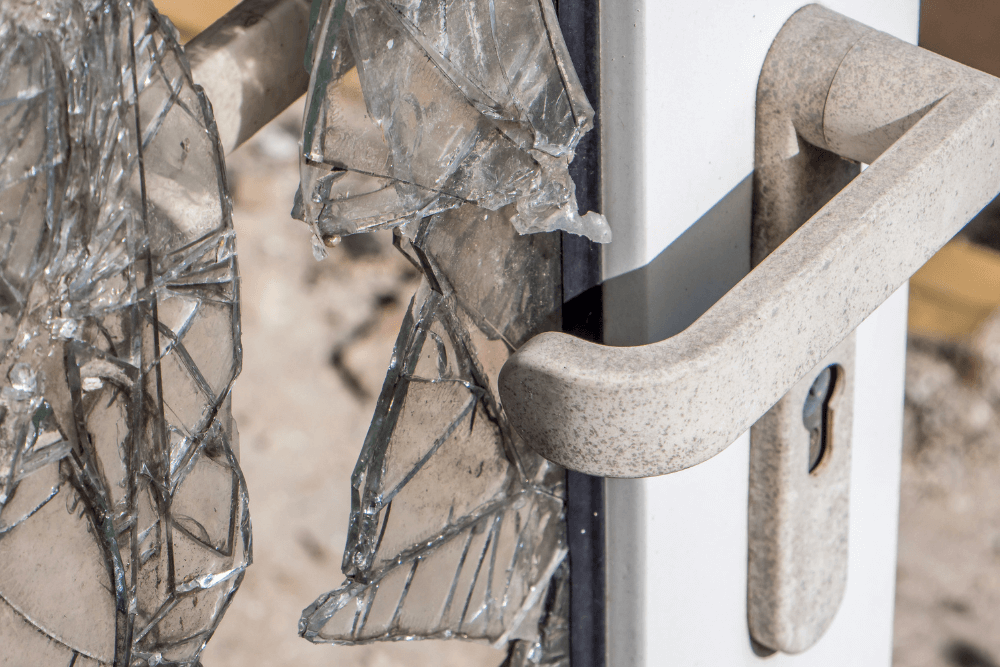Published by NCIA’s Risk Management & Insurance Committee (RMIC)
Contributors:
Ben Taylor, Executive Director of the Cannabis Information Sharing & Analysis Organization
Matthew Johnson, Risk Consultant at AssuredPartners
Haley Glover, Senior Security Consultant at Sapphire Risk
So, you run a cannabis business. You’ve spent years and years going through the licensing process, finding a suitable facility, hiring qualified employees, and growing top shelf buds to impress sophisticated buyers.
It hasn’t been easy – and it hasn’t been cheap. But that feeling you get when you help a sick customer find their new favorite medicine – well, that makes it all worthwhile. After all that hard work, nobody wants to see it all slip away in the middle of the night (and sometimes broad daylight) due to theft.
We have long known cannabis businesses’ perceived abundance of cash on hand has attracted criminal activity. This is evident with the industry’s issues of armed robberies and the silent scourge of employee theft, targeting everyone — well-known brands like Cookies to mom & pop shops. This blog will examine a recent trend which has been on the rise, criminals utilizing vehicles to breach facilities in the act of a burglary.
Dude, Where Did This Car Come From?
Have you recently seen a headline like “Thieves Crash Stolen SUV into Seattle Marijuana Dispensary During Burglary,” or “Five Arrested After Stolen Vehicle Involved In Cannabis Dispensary Robbery Crashes,” and think you were having déjà vu? Unfortunately, those two incidents happened months apart, in two different states last year. The fact is that criminals are increasingly utilizing vehicles as the primary means of breaching cannabis facilities to obtain cash & product.
While not a new technique, vehicle rammings have risen in prevalence over the past few years, sparked in part by a TikTok trend known as the Kia Boyz. As the Cannabis Information Sharing & Analysis Organization (Cannabis ISAO) detailed for The Blunt, the trend starting picking up within the industry in 2022 as social media spread details on how to easily start non push-button ignitions on certain makes and models utilizing a USB charger.
It is important to understand crime trends like this to evaluate a changing risk landscape, which can impact how resources are deployed. But for this blog, how a criminal obtained a stolen vehicle and breached your outer security isn’t the most relevant question. We will focus both on mitigation strategies, as well as how to respond to such incidents.
Let’s Hear From A Security Professional
With years of experience in cannabis (not to mention jewelry stores and pawn shops), the Sapphire Risk team are bona fide experts in security. Though they prefer to be involved as early as the application/buildout process, Sapphire’s team frequently gets called in after break-ins to help operators fortify their facilities.
We spoke with Sapphire Risk’s Senior Security Consultant Haley Glover, who shared the following advice about preventing unauthorized vehicular-assisted entry. “Implementing physical barriers like bollards or security planters placed strategically around the exterior of the building are great ways to prevent a vehicle from successfully driving through your location.” Bollards can be tremendously effective at stopping an errant vehicle in its tracks. Keep an eye out and you’re likely to notice them around federal buildings, banks, and high-end retail stores!
Another area of concern for cannabis businesses are the entryways. Haley advises, “A business can utilize the strongest and most secure door, but without a frame to match it, the door is useless, so it’s important to consider all aspects of a facility when securing it and identifying where threats and vulnerabilities could be present.” Don’t put a strong door in the middle of some cheap drywall!
Beyond Walls, Bars & Guards
While Warden Norton from Shawshank Redemption felt the only way to spend tax-payers’ hard-earned money was to get “more walls, more bars, and more guards”, adding additional physical barriers is not the only deterrence strategy that cannabis operators should be considering to safeguard their facilities.
Washington State’s Senate unanimously passed a bill that would increase penalties for anyone who utilizes a vehicle to gain entry into a cannabis retailer. Senate Bill 6133, sponsored by state Sen. Jim McCune, R-Graham, would have a new “special allegation” to seek an additional year of custody for the convicted criminal. Prosecutors could also charge the suspect with either first-degree or second-degree robbery – a class A or class B felony, respectively. (A PDF of the bill can be viewed here.)
NCIA’s Risk Management & Insurance Committee recently spoke with Senator McCune’s staff to learn more about this initiative. It is important to note that while this bill’s genesis from legislative recognition of a growing safety problem, there is now a model for industry professionals in other states to help drive legislation that will serve as a proactive deterrent.
While the passing of the Integrity, Notification, and Fairness in Online Retail Marketplaces for Consumers (INFORM Act) by Congress last year made headlines as a major win in the fight against Organized Retail Crime (ORC), it’s mainly addresses the problem of reselling stolen merchandise via online marketplaces, which is not the destination of stolen cannabis products. This is further proof cannabis businesses need to lean into their State legislatures to get support that is currently unavailable at the Federal level. Efforts like the Robbery Tracker that has been put together for several years by Uncle Ike’s Ian Eisenberg can help demonstrate to legislators the need for additional crime deterrents.
Dive into Insurance Mumbo Jumbo
Let’s talk about Protective Safeguards endorsements on cannabis property policies. These endorsements will exclude losses if all the described protective safeguards (security guards, alarms, cameras, vault, etc.) aren’t in place and/or properly functioning. Imagine having a house fire and getting your claim denied because you didn’t replace the batteries in your smoke detector. Well, it’s the same thing for cannabis.
Protective Safeguards endorsements can be as simple as a burglar alarm or as demanding as needing a follow car, two way radios, and telematics in place for your cannabis delivery vehicles. Another common provision is for product on display – most insurance policies required product to be stored in a safe/vault while a store is non-operational, with a sublimit only allowing around 25% of stock to be on display at any given time. Whatever the situation, best to make sure you read the policy thoroughly and understand what is required of you for coverage to respond.
One should also be familiar with the coverage sublimits in their policy and adjust them regularly to adequately reflect stock on hand. In another scenario, a cannabis business has all of their security systems and protective safeguards in line. Robbers come by and steal millions of dollars worth of cannabis products — but the business only has a $100,000 sublimit for cannabis inventory! Imagine the frustration of following all the rules and only walking away with a partial reimbursement after a huge loss.
Incident Response
As with any incident, things go more smoothly when you have a plan in place and everyone knows their roles and responsibilities. This can help ensure to both expedite the process, while also making sure vital steps are not overlooked.
Some items that should be contemplated in the plan might include:
- Contact local law enforcement
- Gather and maintain written event logs
- CCTV video storage and maintenance
- Appropriate follow-up steps depending on the situation
- security weak-spot reviews,
- HR interviews,
- medical follow-up, or
- filing an insurance claim
By having formal guidelines in place for event response, you’ll save valuable time and money getting the business operational again — while minimizing the confusion that your employees face during a time of crisis.
Conclusion
The RMIC advocates for a proactive approach to risk management that emphasizes the importance of informed decision-making. When in doubt, contact a trusted insurance professional and get a second set of eyes on your coverage — and your protective safeguards!



Follow NCIA
Newsletter
Facebook
Twitter
LinkedIn
Instagram
–